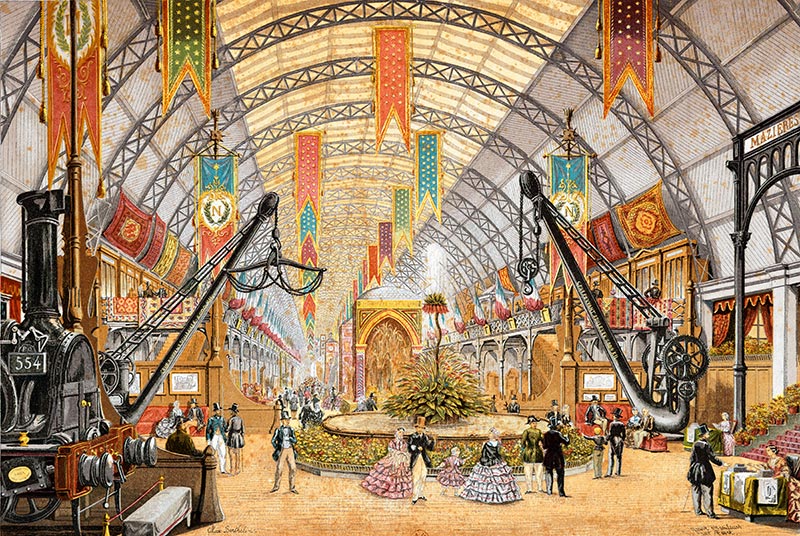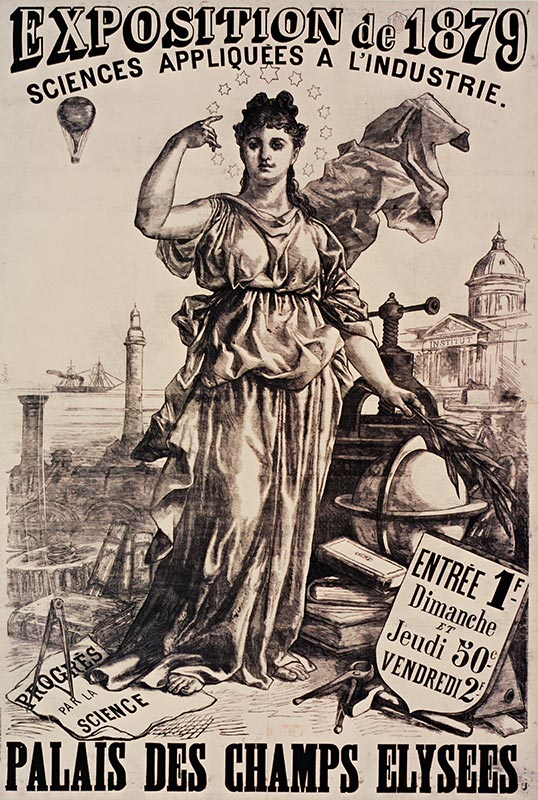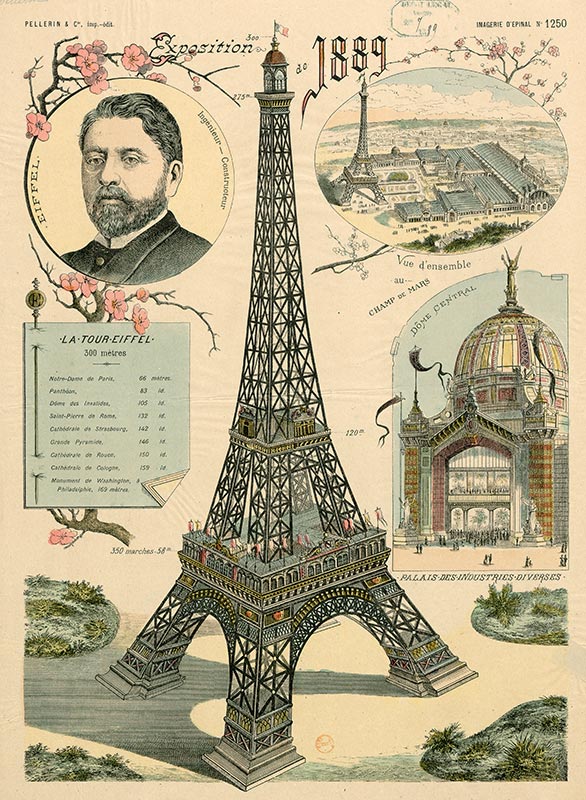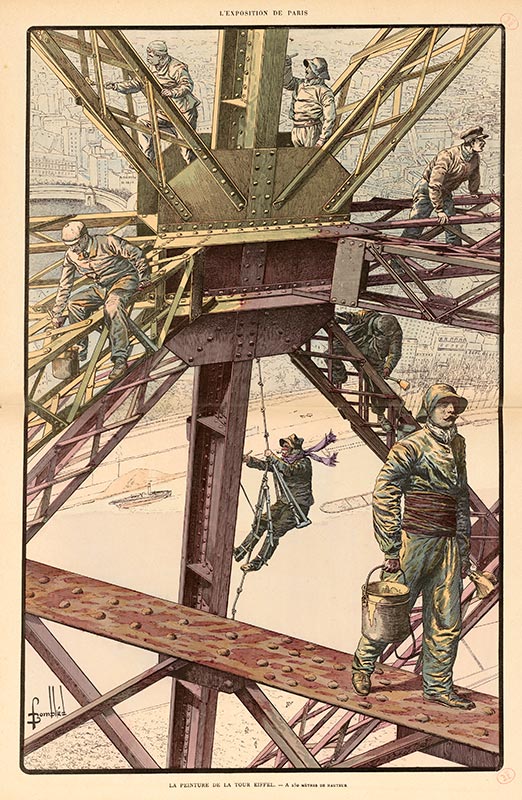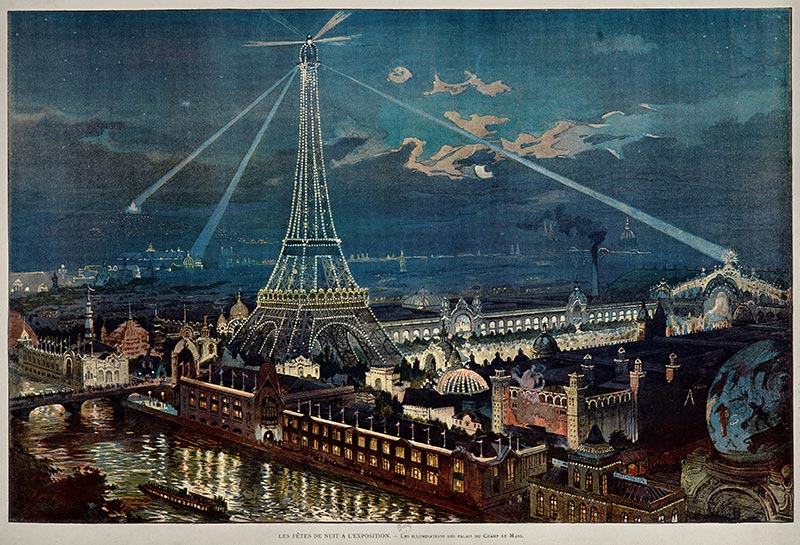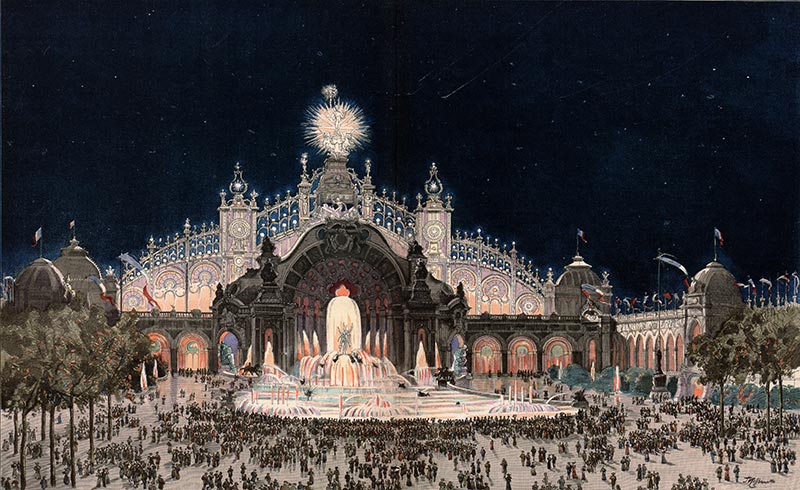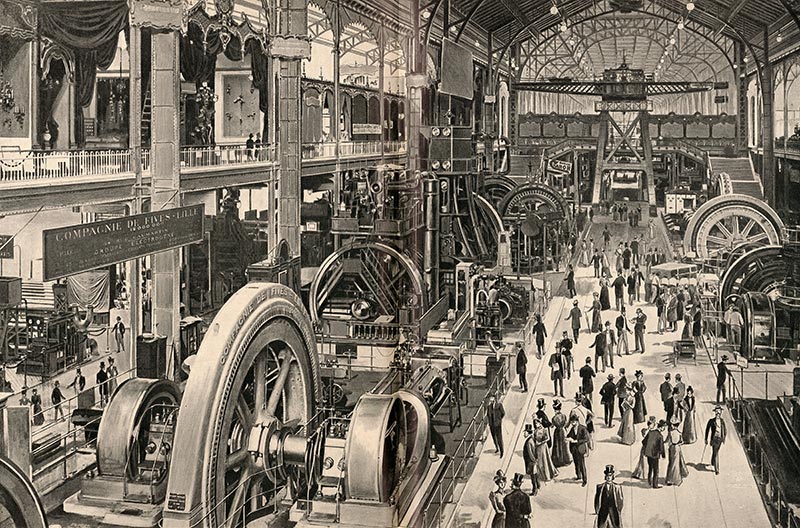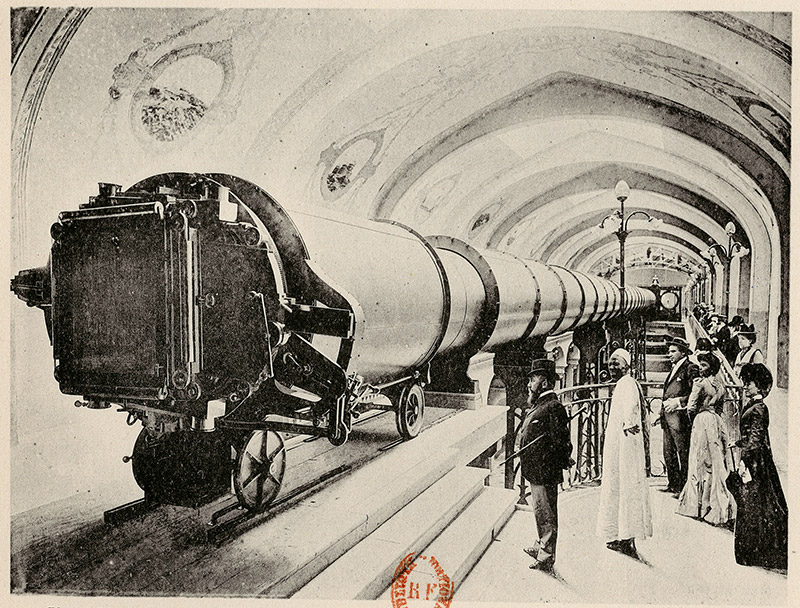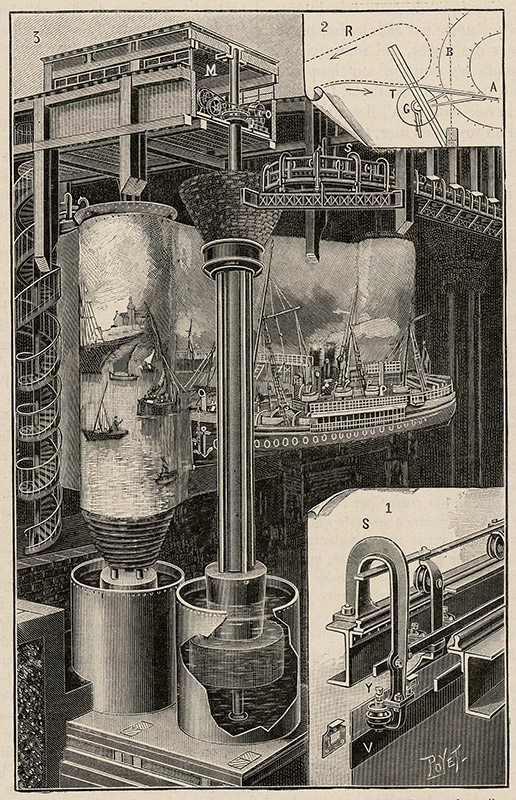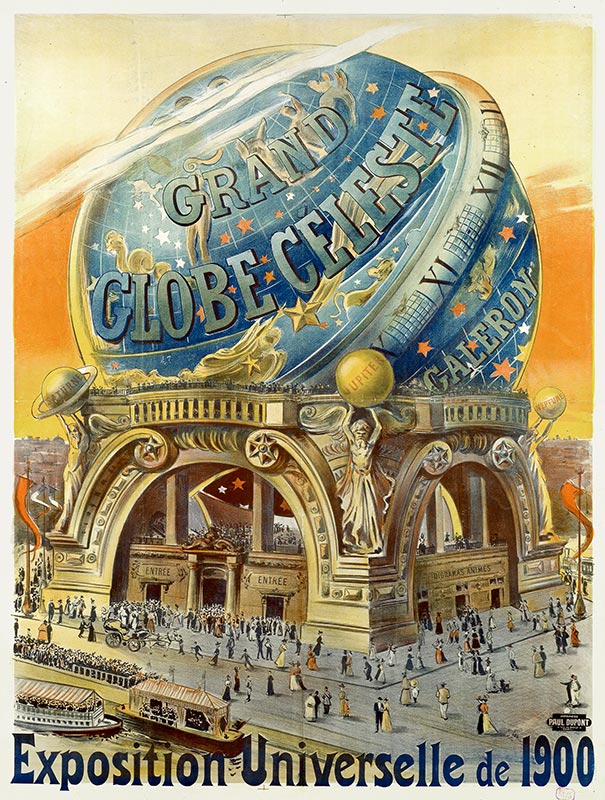Science Fairs
“At night, lights sweep across the Champ de Mars, the water tower streams with cyclamen colors; all is green droplets, orchid sprays, water-lily flames, orchestrations of liquid fire, orgy of volts and amperes. The Seine is violet, iridescent pink, ox-blood red. Electricity is accumulated, condensed, transformed, bottled, stretched into wires, rolled into spools then discharged in water, emancipated on rooftops, unleashed on trees. It is the bane, the religion of the year 1900.”
Morand, Paul, 1900, 1931, p. 76-77
At the National, Industrial and World’s Fairs that were held in Paris between 1855 and 1900, the public was amazed by the industrial and technological progress on display.
While they were alluded to even at the 1855 exposition, industrial applications for science were the theme of the 1879 fair.
During the 1889 World’s Fair, the Eiffel Tower, which had just been inaugurated, fascinated fairgoers.
But with more than 50 million visitors, the 1900 Fair was by far the largest.
Powered by electricity, night-time illuminations covered a large part of the Fair, as well as the Palace of Electricity itself.
The Palace of Illusions had a large hexagonal hall covered in reflective panels. They made Paris a truly magical place, worthy of its nickname, the “City of Light”.
Le Château d'eau vu de la Tour Eiffel (15 avril - 12 novembre 1900). @ Institut Lumière
The large astronomy telescope was the main attraction, but other, even more ingenious exhibits also enchanted the public. They were based on the principle of panoramas: Cineorama, Stereorama, Mareorama and Diorama.
In the case of the Mareorama, spectators stood in the middle of a circular screen with images from 10 projectors creating the impression they were on the deck of a boat cruising through the Mediterranean.
Another attraction was a magnificent celestial globe, a blue-and-gold sphere almost 150 feet in diameter.
Visitors could go inside it, or simply admire the heavenly vault while dining in the restaurant overlooking it.

